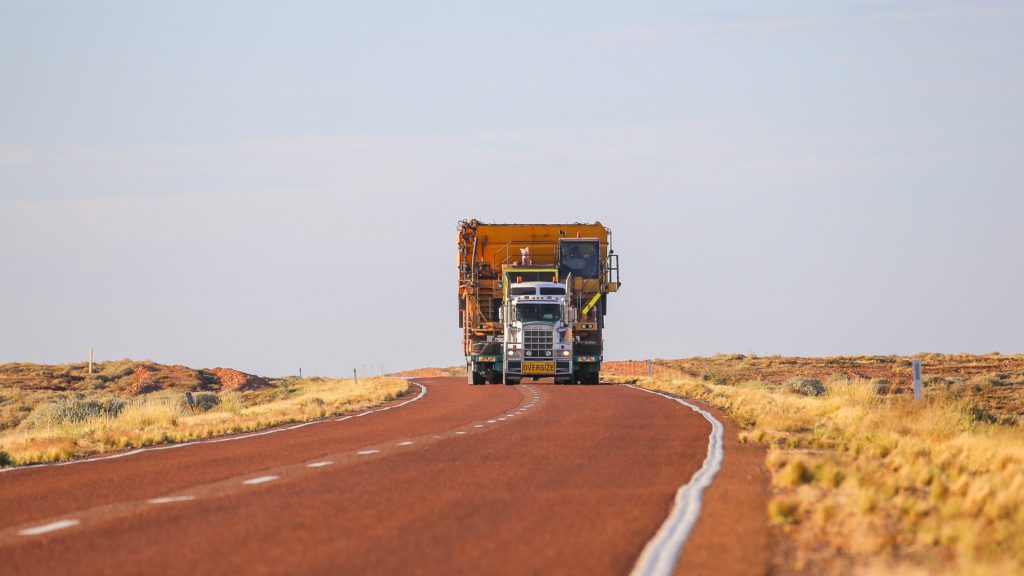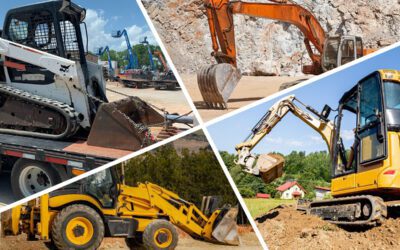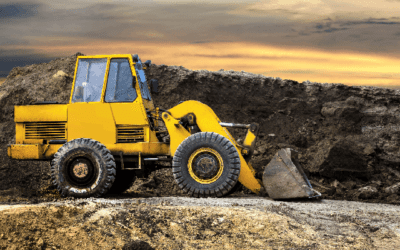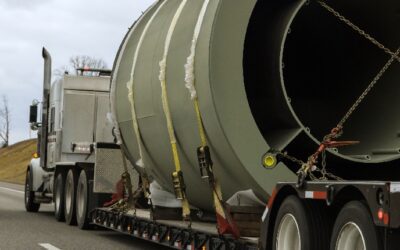Oversized Machinery Transport: 2021 Overview
What differentiates heavy equipment from oversized machinery when considering oversized machinery transport services is the width, length, and height dimensions of the equipment. Weight is the only factor in determining if equipment is heavy or overweight. Width, length, and height dimensions are what is used to determine if a piece of equipment is oversized.
Oversized machinery will often be considered a heavy load — but it is important to note that weight is not a factor when deciding what equipment is considered actually ”oversized”. This post will serve to give a general overview of oversized machinery shipping, and how the process works.
Oversized Machinery Transportation: Oversized Dimensions
So, what dimensions qualifies as oversized machinery shipping? Depending on the state, dimension regulations are different. But, there is a general rule of thumb. In most states, an oversized load is considered to be any load that is wider than 8.5 feet and/or 13.5 feet tall. Note that the height of the load is measured from the road surface — and not the transportation platform — to the highest point on the load.
The transportation of oversized equipment can still occur without an issue. The only additional requirement that a transportation company will often need is a state permit that enables them to travel on highways. In some cases, if the width exceeds 12 to 14 feet, there are more regulations that a state will enforce (e.g. pilots, escort vehicles).
Loads exceeding 16 feet in width are no longer considered oversized but are rather categorized as “superloads” instead. These superloads require even more regulations such as temporary road closures and the presence of law enforcement. As you can see, the wider (and taller) your load — the more preparation and haul fees you can expect.
With many regulations to consider, it is important (and necessary) to understand the weight and dimensions of the load. Pre-transportation surveys and permits must be prepared for the states or countries that the transport will move across prior to the oversized machinery transport. That’s precisely why the weight and dimensions cannot be loose estimates. The more accurate they are, the more smoothly the transportation process will go.
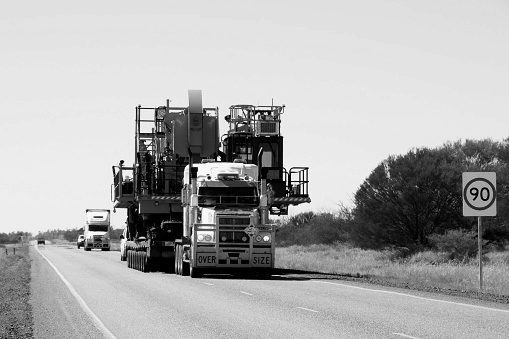
Following Weight Regulations
As mentioned, overweight loads are not necessarily always going to be oversized. In fact, most states will treat weight separate from size issues and standards. That’s why weight regulations matter. There are separate fees attached to overweight machinery.
If the machinery is oversized, you will have to pay oversized fees. If the machinery is overweight, you will have to pay overweight fees. When the equipment is both oversized and overweight, you will have to pay both fees for your transportation.
Now, what are the weight regulations? Without a permit, the maximum legal weight on any axle configuration is 34,000 lbs. With a permit, the maximum per-axle overweight limit increases to 44,000 lbs. For more on oversize regulations, click here.
Like with the dimensions, some weights classify as “superloads” instead of oversized hauls. The superload weight classifications vary greatly depending on the state, ranging from 80,000 lbs. in California to 250,000 lbs. in Arizona.
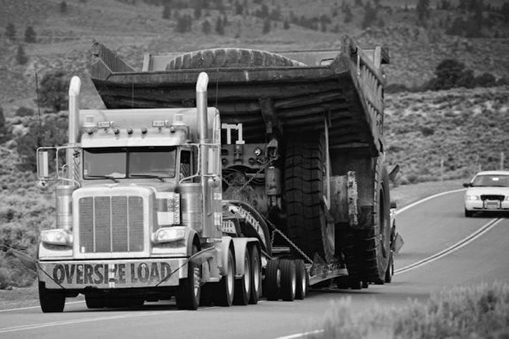
Divisible and Non-Divisible Loads
States generally prefer that oversized loads are divided into two or more regular loads when possible. However, the division of loads is often not possible when it comes to an oversized machinery shipment. Non-divisible loads cannot be broken up.
On the chance that your equipment can be broken into smaller pieces, then it would be a divisible load and likely delivered on different trailers.
This may be the better option because divisible loads can reduce preparation time and the number of necessary permits while improving safety.
Relevant Terminology
If your load fits into the oversized category, and you are considering getting it transported — here are some relevant terms. These oversized machinery terms will keep you in the loop and ensure a smooth transportation process:
- Conestoga — This is a specific type of flatbed equipped with a special tarp system that allows for easy tarping of a flatbed or step deck load.
- Consignee — This is the party (and location) that the load will be delivered to.
- Exclusive use — An agreement between you and the transport company that the trailer will exclusively transport your haul. Other shipments for other clients can not be hauled onto the same trailer as your equipment.
- Escorts — Pilot and car vehicles that assist in the movement of oversized or super loads. They are responsible to stop traffic if necessary and ensure that the trailer has enough space to operate safely.
- Open-deck — This is a classification of trailers that are open-space and do not contain walls or a roof. These trailers are often used to haul items such as machinery, equipment, and construction material that do not fit into traditional trailers.
- Partial loads — These are shipments that do not require the full deck space of a trailer. Multiply partial loads can be hauled on one trailer. If the trailer size permits, it is possible that oversized machinery is considered partial loads.
- Straps — Vinyl material used to secure and keep your oversized machinery still a trailer.
- Tarp — A vinyl fabric that is used to protect your machinery from natural elements like wind and rain in open-deck trailers.
- Sidekit — A flatbed type that is lined with fiberglass or plywood panels mounted vertically. This allows for shipments that are not or cannot be packaged or crated.
Securing Your Oversized Machinery: The Process
If oversized machinery transportation cargo is not secured properly, accidents may happen mid-transportation. Even if there is no accident, law enforcement may deem the transport vehicle as unsecure. As a result, the driver and transportation company may be subject to fines or out-of-service vehicles. This matters to you because it can drive up previously expected costs while also delaying your equipment from being delivered on time.
Plus, it’s not very good from a safety standpoint. Being oversized (and often very heavy), these accidents can lead to big problems that put the driver and other nearby vehicles at risk. It is the carrier’s responsibility to ensure secure oversized machinery transport, so you must choose the right company.
Here’s how we ensure that your expensive machinery is secure while on the road.
Oversized Machinery Shipping Weight Management
Even distribution of the equipment’s weight on the trailer will make or break the oversized machinery transport process. That’s because individual axel groups may exceed weight limits even if the total weight of the equipment does not exceed the total trailer weight limit. When weight is not distributed evenly, your carrier will run the risk of violating permit regulations and damaging the equipment.
If weight is not distributed evenly, there are certain steps that can be taken to manage the weight.
- Repositioning the load to evenly rest on all axel groups in order to create balance.
- Moving the rear trailer axle to evenly carry the load
- Use a specialized trailer
- Obtain the appropriate permits
Basic Accessories to Secure Your Equipment
Having the right accessories to secure your equipment is half the battle. While you may personally not have these accessories on hand, any qualified carrier company will. Here are the basic accessories that can help secure your equipment:
- Chains — All flatbeds should have chains on their trailers. They are most often used to secure heavier loads like machinery. Chains may occasionally damage equipment so it is not advisable to use them for expensive or delicate equipment (unless v-boards/edge protectors are used).
- Straps/Tiedowns — Like chains, straps and tiedowns are used to safely secure loads and keep equipment in place. The number of straps on each trailer depends on the specific carrier or truck.
- V-Boards/Edge Protectors — These accessories are used to separate the equipment from the securing chains or straps. They serve to protect your equipment from scratches. They also protect straps from being ripped.
- Tarps — As mentioned earlier, tarps are designed to be secured over freight to protect it from the elements. Steel, lumber, and smoke are various types of tarp that you may want to consider.
Follow All Industry Standard Rules
The Department of Transportation (DOT) Federal Motor Carrier Safety Administration (FMCA) enforces a list of load securement rules found in section 3.8.1 of the Cargo Securement Rules handbook. This handbook consists of general rules for all loads, and there is also a selection that applies to heavy and oversized loads over 10,000 lbs. This is the part of the handbook that oversized equipment transporters need to pay special attention to.
In 2018, more than 18,000 cargo securement violations were issued on accounts of complete lack of or improper load securement for oversized machinery transport. The remaining 16,000 cargo securement violations were failing to secure vehicle securement.
To secure your oversized machinery, we follow all industry standards and abide by all rules found in the Cargo Securement Rules handbook. Whatever carrier you choose to work with, it is critical that they follow industry safety guidelines.
